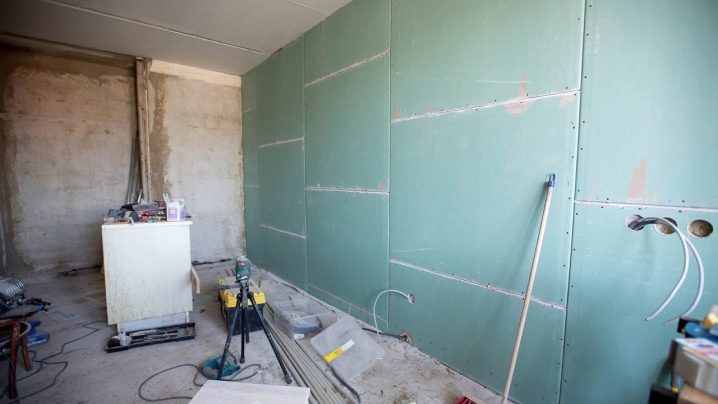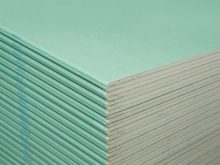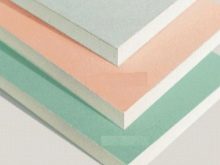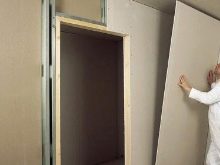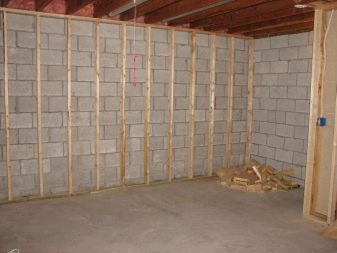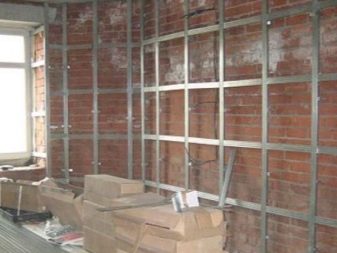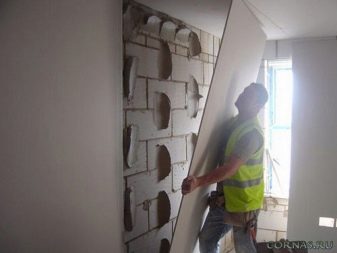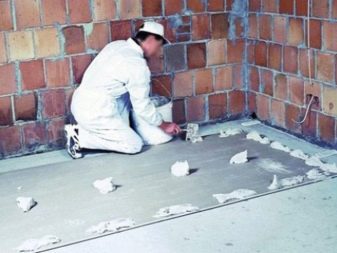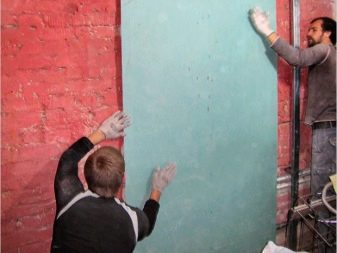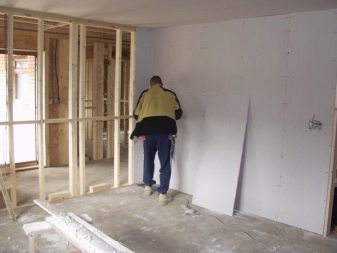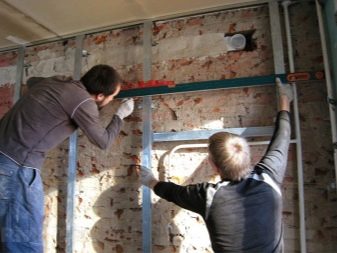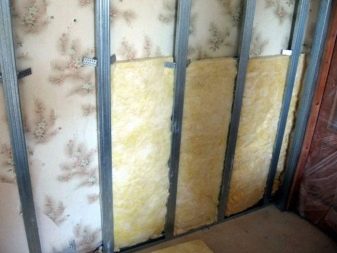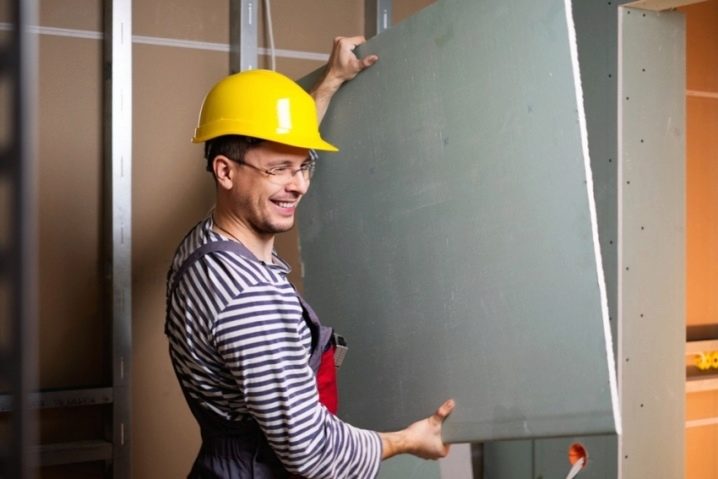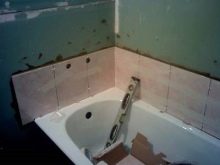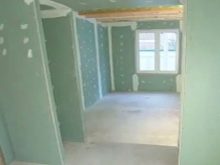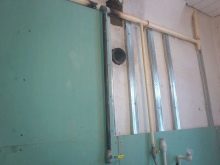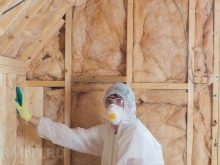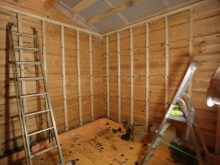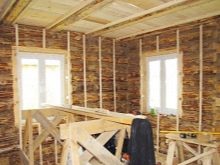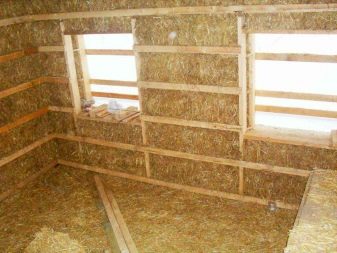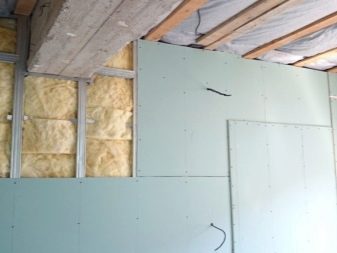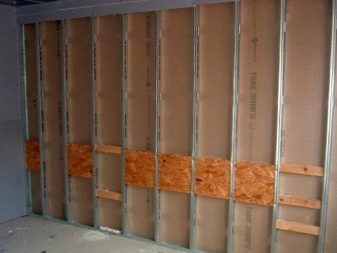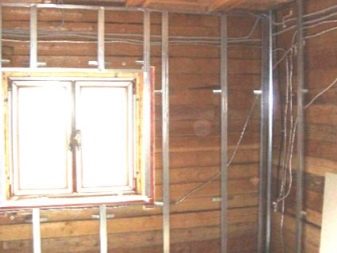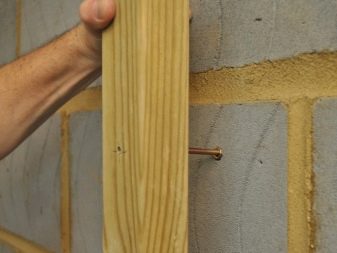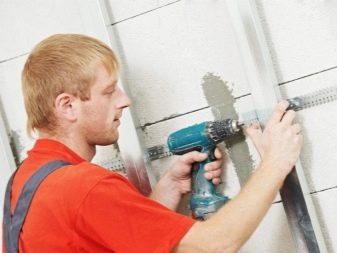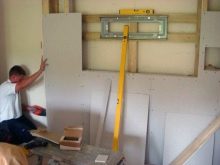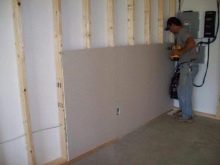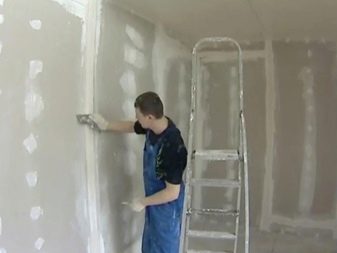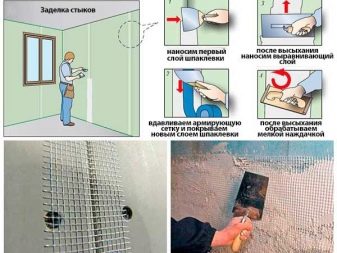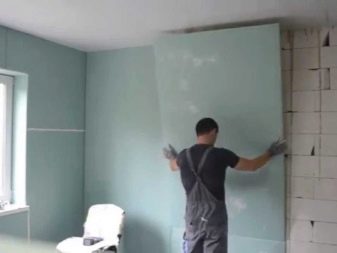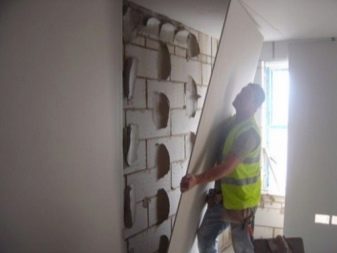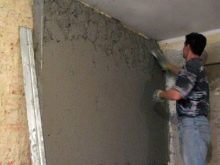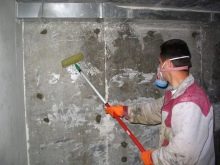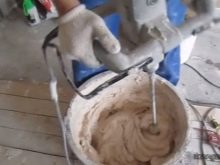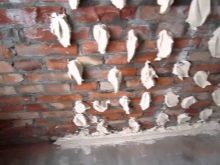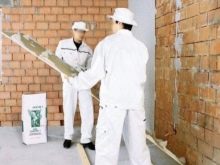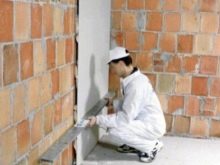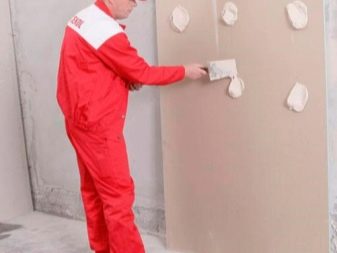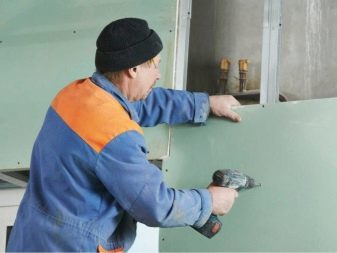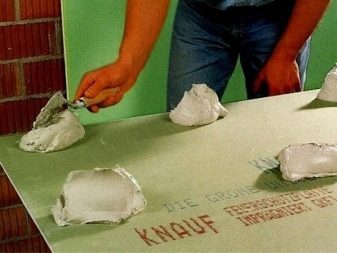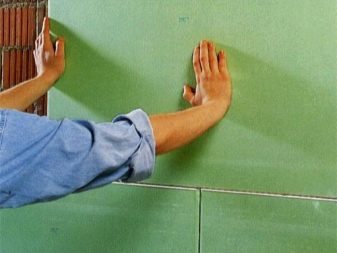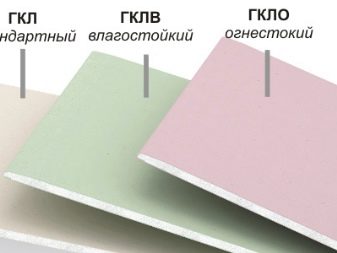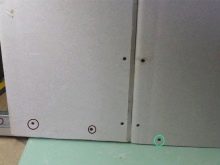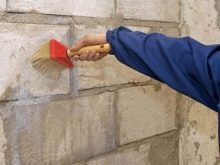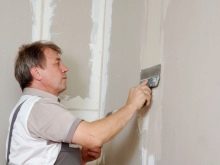Alignment of walls with drywall: process features
The problem of uneven and curved walls with many differences is not uncommon. To correct such defects in various ways, however, one of the simplest and fastest is the alignment of the walls using sheets of drywall. This method of adjusting the wall base can be used both in a regular city apartment and in a private house. We will get acquainted closer with the intricacies of working with drywall, and also consider in detail the features of the process of leveling surfaces using this material.
Special features
Many owners of private houses and apartments at least once in their lives faced with the problem of uneven walls. Such defects cause a lot of difficulties in the repair process.It is impossible to apply many finishing materials to such overlappings, and they look completely unattractive.
Currently, there are many different ways to align this or that basis. One of them is the laying of sheets of drywall. Many people turn to this leveling method, because gypsum panels are inexpensive and are quite simple to install.
Such popularity and demand for drywall is also explained by its ideally even and smooth surface. Due to this feature, this material is able to make aesthetic and straightforward even the undulating surfaces of the walls of a log house.
Installation of gypsum boards can not be called too difficult, so it can cope with any home craftsman. The most difficult thing to face is the construction of a high-quality and reliable framework to which the gypsum boards will be mounted. The durability and aesthetic appearance of the leveling layer depends on this component.
Frameworks are made of different materials, but the most common are structures made of metal and wood.Metal elements should be treated with anti-corrosion agents to avoid damage over time, and wooden parts should be well dried and intact (no signs of rotting). Only if these requirements are met, the resulting construction will serve for many years, without giving the household the slightest problem.
If you are afraid to make a frame construction yourself, you can fix the drywall on the floors in another way - with the help of glue. Of course, in the case of too sharp and noticeable level drops, this installation method will not work, however, overlapping with minor defects is quite possible to align this way.
Advantages and disadvantages
Drywall is quite often used in leveling walls.
And the material itself, and the corresponding method of finishing floors have many positive qualities.
- The first thing to note is the quick and easy installation of leveling gypsum boards, especially when compared with other ways to adjust floor slabs.
- Drywall itself is perfectly smooth, so it does not require special training after its installation.It does not need to putty or grind, which allows you to significantly save time. Of course, the putty can be applied to sheets GCR, but this process is not mandatory. As a rule, it is addressed if there are noticeable seams between the gypsum panels that need to be hidden.
- Many consumers turn to leveling the walls with drywall, as it is inexpensive. In terms of price, this finishing material benefits from more expensive plaster, which can also be used to remove irregularities.
- GKL-sheets on the frame can be mounted on any base.
- When leveling the walls with drywall, you will not come across a lot of “wet” work. Due to this, it is possible to work with overlappings even after the flooring of a clean floor covering.
- Between the drywall and the wall (in the case of the frame mounting method) there are always free cavities that can be used for laying communications. In addition, in these spaces often install insulation.
- Drywall is a pliable material, which is very easy to work with. After work on the installation of gypsum sheets, you can finish them to your liking - wallpaper them, paint them with paint, decorate them with spectacular panels and other similar coatings.
- Alignment of the overlap with plasterboard sheets is absolutely safe. GCR is recognized as an environmentally friendly material, in which there are no hazardous substances and harmful compounds, so it can be safely used in the living space.
Due to the large number of advantages, leveling the walls with drywall is extremely popular.
Everything has its weaknesses, and this method is no exception.
- Drywall is a rather fragile material, especially when compared with reliable cement plaster. This disadvantage causes some difficulties in the installation process of the panels, as they can be easily damaged.
- When using plasterboard coatings on the walls, there may be problems with fixing hinged pieces of furniture, as well as mounting switches and sockets. Remember: it is impossible to install heavy elements on such surfaces, as the gypsum board is not designed for heavy loads.
- Rough walls in the home must be completely dry. In addition, if they turn out to be less vapor permeable than drywall sheets, then moisture can begin to accumulate in the free cavity.Because of this, a fungus or mold is formed on the walls. Such defects will shorten the life of the drywall and damage its appearance.
- Gypsum cardboard is not recommended to be installed in rooms with the increased humidity level.
If you are still planning to level the overlap in such conditions, it is worth buying not a normal, but a moisture-resistant material. However, according to experts, even such a drywall in a setting of high dampness and humidity is subjected to deformation.
Scope of application
Sheets of drywall can align the walls in a variety of residential premises. It can be not only a dry living room or a bedroom, but also rooms with a high level of humidity - a bathroom or a toilet.
For the last rooms it is recommended to choose high-quality waterproof plasterboard. This material can be used in rooms with a high level of humidity. Such bases are the perfect solution for laying tiles on top of them.
For the kitchen, you can use moisture-proof and fireproof plasterboard. These types of plasterboard sheets are one of the most durable and safe.They can also be glued tile, which is often used in the design of dining rooms and kitchens.
Gypsum plasterboards are optimal coatings for leveling walls in a wooden house or a log building. Thanks to these finishing materials you can achieve perfect symmetry of space. However, it is worth considering that even after complete shrinkage of the wall of the tree undergoes periodic expansion, absorbing moisture, then they lose it, drying out. Because of this, the greatest height to which drywall ceilings can be calculated should be about 6 m. If you do not take into account such features of wooden structures and simply install the frame on the walls, this will lead to cracking of the joints between the gypsum panels, even in installation grid installation.
In log houses, drywall is a lifeline. Before you begin the installation of drywall, the walls in such dwellings must be treated with antiseptic compounds. Only after complete drying of these substances can one proceed to the direct installation of leveling elements.In such cases, you can use chipboard, and already on them to attach drywall.
If the surface of the bases has a noticeable tilt, then instead of the lining of chipboard, it is better to turn to making a reliable frame.
Often, the leveling of the walls with drywall is addressed by people who have an adobe house. Such buildings are very warm. They are original composites and are built from materials such as clay, earth, straw and sand. Of course, with such raw materials, there is no need to talk about ideally smooth walls. That is why the floors in these clay houses just need to be leveled with various materials, and drywall is ideal for such tasks.
How to align?
You can work on leveling the walls with the help of drywall yourself, without attracting specialists. When starting such works, it should be borne in mind that high-quality installation will be a guarantee of durability and aesthetics of the floors in the house, so it should be taken seriously.
There are only two ways to dry wall leveling.
- On the frame. This option of installing gypsum boards is used most often, although it is more laborious due to the preparation of a high-quality frame. It is assembled from metal or aluminum profiles or wood.
- With glue. More simple is the fixation of drywall on the wall base with a special construction adhesive.
Both mounting options are possible to do it yourself. Let's take a closer look at step-by-step instructions that reveal all the steps in these installation methods.
On the frame
With this method of installation sheets of drywall are fixed on the frame, made of metal or wood. Most often people use metal structures, as they are unpretentious and more durable. They do not need to be regularly taken care of, such as, for example, wooden products that are prone to decay and drying.
Frames are pre-fixed on the wall, which requires alignment. If the structure is made of wood, it is necessary to make sure that it is completely dried and does not have any rotting marks on the surface. Otherwise, in the process of moisture release from the material, the whole structure may be deformed, as well as lose its visual appeal.
When installed on a wooden frame between the sheets of drywall may be noticeable gap. In order not to face this problem, experienced experts recommend using a metal profile that does not lead to such defects.
To create a high-quality frame, you need to use rack and guide profiles. The latter are necessary to determine the contour of the resulting structure. To do this, they need to attach to the ceiling and the floor (parallel to each other). As a rule, first fix the details on the ceiling, and then with a plumb-line measure out the place for the sexual profile. After that, the guides are connected to each other with the rack elements, which should be mounted on the screws. Do not forget to maintain a distance of 40-60 cm between them.
To make the frame more durable and wear-resistant, it is possible to additionally install suspensions in the design, and attach rack profiles to them. Maintain between them a step of 30-50 cm.
In addition, it is very important to determine what load the leveling overlap will be calculated for. Sites where it will be tangible, it is recommended to strengthen with hard boards or plywood.These elements can be installed in the cavity between the drywall and the rough floor.
Installing drywall on the finished frame is quite easy. GKL must be attached to the structure using draft screws. Similar fasteners are made of special oxidized metal. Their number directly depends on the size of the drywall sheet. For example, for a standard canvas with dimensions of 2.5x1.2 m, you will need about 100 self-tapping screws.
Screwing screws, be as careful and carefulotherwise, you risk ruining the drywall by damaging it. Hats should always be slightly embedded in the drywall coating itself, but do not push too hard.
Thanks to the frame installation method, you can warm the room, if necessary. In the cavity left between the wall and drywall, it will be possible to place a warming layer. Most often, consumers choose for this popular mineral wool or glass wool. However, it should be borne in mind that all components should be as close as possible to each other so that there are no gaps between the mats. Such materials are not only heat but also soundproof.
Various flaws can be present on the finished plasterboard base, so you should carefully examine it. Most often on such walls remain visible caps screws.
The last step in creating the frame smooth walls is their puttying. It is especially important to putty areas where there were left the caps of screws and ugly joints between sheets of drywall.
Before you begin to putty joints, they need to paste a special mesh tape - serpyanka. This part is necessary for better and reliable adhesion of putty with drywall. After applying serpyanka surface of the sheet is covered with soil, and then putty. Thus, the tape is pressed into the first layer of finishing, and then another layer of the mixture is applied to it.
If you plan to apply a tile on a finished and even wall, you may not need to putty it. However, if you plan to finish the wall with wallpaper or paint it with paint, it is better not to neglect the putty.
Frameless method
Frameless installation of plasterboard leveling sheets is more simple. It is ideal for novice masters who do not have sufficient experience in such works.
With this installation, the plasterboard sheets are fixed on a special glue.This adhesive composition is quite common and is found in many hardware stores.
Before proceeding to the installation of drywall on the walls, they must be prepared. First you need to release the rough base from the old finishing material, as well as dust and dirt. After that, measure the evenness of the slabs. If this indicator is in the range of 4-7 mm, then the adhesive composition should be smeared on the entire area of drywall, smearing with a notched trowel. After that, sheets can be glued to the base. If the curvature of the walls reaches 20 mm, the glue should be applied in separate portions in sections. At the same time it is necessary to maintain small intervals.
However, there are cases when the curvature of the walls exceeds 20 mm. In such cases, the floor must first be leveled with plaster, and only then glue the drywall panels.
When you have removed old finishes and dirt from the floors, they must be properly primed. Keep in mind that when combining the surface plastering with dry and wet methods, you need to start with wet processing, and after it is completely dry, proceed to dry.
Then you need to prepare for the work of the adhesive. How to dilute it, as a rule, is indicated on the packaging. Try to strictly adhere to the instructions provided, otherwise the composition may lose its useful properties and become useless. Properly prepared glue should have a thick texture, similar to cottage cheese. Do not immediately knead a large amount, as the mixture will dry completely in half an hour, and then you will not be able to use it.
Experts recommend installing beacons on draft walls - so the sheets of drywall will be in a perfectly flat plane. Of course, the alignment of the walls can be done without the use of lighthouses, but such work will be more laborious.
Simple algorithm by which the alignment of overlaps with drywall with frameless method.
- At the places where it is planned to glue the gypsum sheet, it is necessary to apply pre-prepared glue.
- Then the gypsum plasterboard should be turned upside down and put portions of glue on it, keeping small intervals. Most often, the adhesive composition is laid out only around the perimeter of the plate, but for greater reliability, several adhesive spots should be applied in the middle of the sheet.
- Now drywall should be lifted and lightly pressed to the wall. Do not push the material too hard, otherwise you risk breaking it.
- Using a rubber-bent hammer and construction level, level the sheet and press it against the base.
- The remaining drywall sheets should be attached to the base in a similar manner. However, do not forget about checking the joints between the parts.
Based on this algorithm, we can conclude: frameless alignment of the walls is quite simple, although many experts claim that it is more difficult than the frame. The choice of the optimal method of installation remains only for the owners of the home.
The frameless version can be accessed only in cases when the ceiling height in the room does not exceed the height of the gypsum board sheet, otherwise horizontal joints between the sheets will be unacceptable.
Tips
If you have firmly decided to self-align the walls in the room, you should lean on Some tips from experienced craftsmen.
- Pay attention to the quality of purchased materials. You should not look in stores too cheap goods, because they may have low quality.High-quality designs will cost more, but they will serve faithfully for many years, without bringing problems.
- Pick up the drywall in accordance with the conditions in which it will be. In rooms with high humidity (bathroom, kitchen, toilet) special moisture-proof panels should be installed. Regular sheets are cheaper, but in such conditions they quickly deform and collapse.
- If you choose a frameless installation method, you should take care in advance about the selection of a suitable adhesive. Reliability and durability of the resulting finish will depend on the quality of the adhesive mixture. It is necessary to dilute this composition, carefully following the instructions on the package.
- Make sure that in the process of installation the joints between sheets of drywall pass strictly in the middle of the vertical profile.
When sealing joints and seams, you should not use too much putty, because its surplus can significantly spoil the impression of the work done.
- Despite the fact that the frame method of installing drywall does not provide for special preparation of rough floors, they should still be treated with primer with antiseptic components in the composition.
- After installation on plasterboard sheets often remain bulging hats from screws. It will be most convenient to putty them with a narrow trowel.
- When fixing drywall sheets with glue, it is necessary to consider the time of its drying. As a rule, it takes 30-40 minutes (depending on the composition of the adhesive).
- When installing the drywall on the frame, try to keep a distance of less than 30 cm between the screws. The ideal distance between the two fixtures will be 12-20 cm.
- During installation, it is recommended to install special gaskets with a thickness of 10-15 mm between the floor and the sheet, as well as the ceiling and plasterboard. They are necessary so that the FCL can expand freely if the room temperature or humidity level changes.
On the secrets of the installation of drywall, see the following video.

